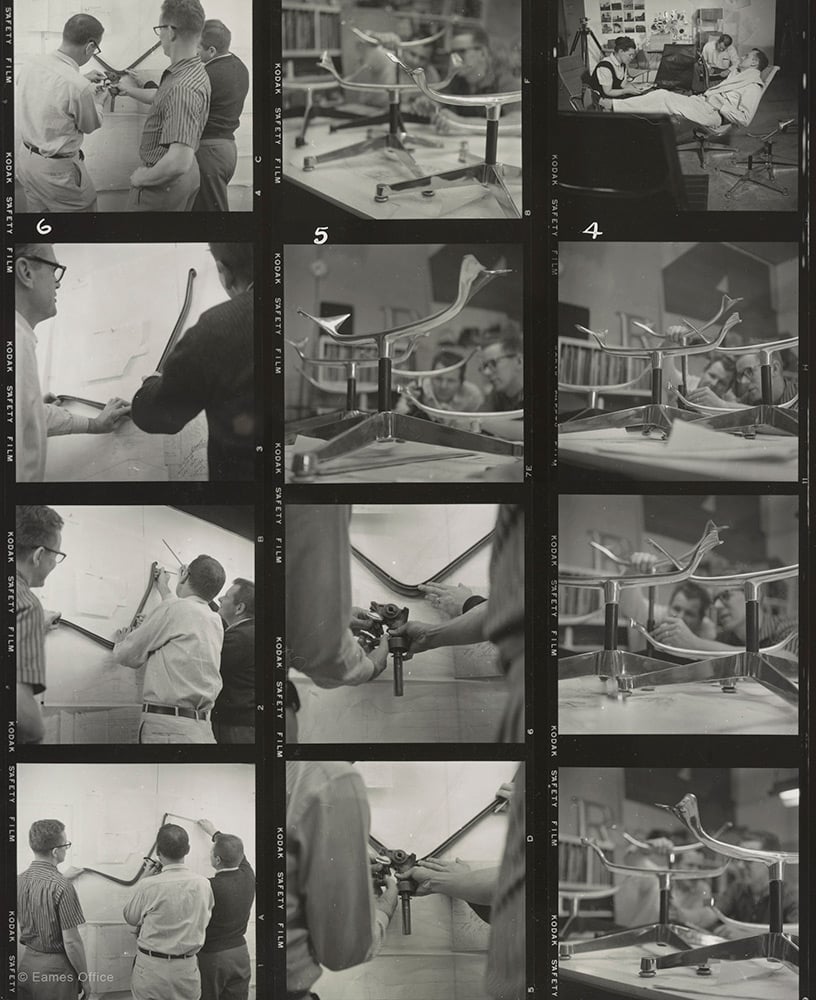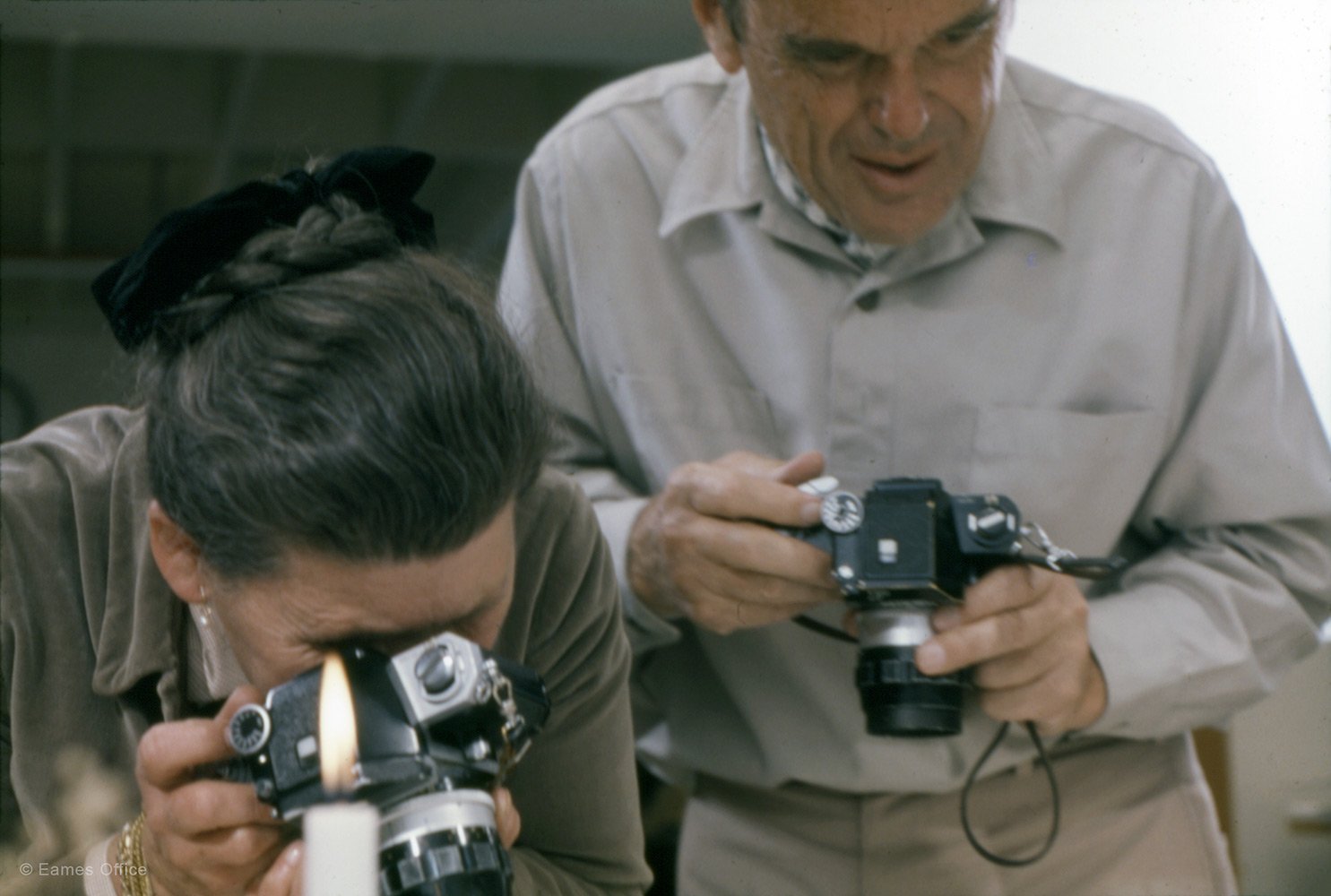Photography as a Tool
Charles and Ray Eames, alongside the Eames Office staff, photographed and developed hundreds of thousands of images over a period of decades. The Eameses used photography to document and reconfigure a project as it progressed or to formulate and express ideas. These pictures were a tool for communication and education, and therefore, it is unsurprising that a section of the Eames Office was dedicated to an image repository. The photography archive room boasted a long wall with lightboxes, organizational files filled with Kodachrome slide negatives, and flat surfaces for gathering selections of photographs. The Eameses and their staff were able to pull visuals from these thousands of records when researching for a client such as IBM or creating an image slide show for the American government.
“For many years we have used photography as an information tool. As the information we needed to communicate developed greater urgency and complexity, we got more and more involved in the medium of motion picture—multi-image—collection of stills.”
Charles Eames
Ray as an Archivist
After Charles passed away in 1978, Ray began readying the Eames Office’s objects and photography for archival safekeeping at the Library of Congress in Washington D.C. Since the late 1980s, approximately 1.5 million two-dimensional objects such as letters, plans, artwork, and photographs are housed in the LOC’s Manuscript Division and the Prints & Photographs Division. The Eames Office currently holds duplicates of a smaller selection of historic photographs from the Library of Congress collection, in addition to records related to the Eames Office’s history since 1988. This historic archive spans subjects such as portraits of Charles and Ray, furniture production, artwork, patent drawings, film and slide show frames, oral history transcripts, exhibition research, architectural spaces, letter correspondence, molded plywood experiments, advertisements for Herman Miller, toy photoshoots, photographs of loved ones and well-known individuals, travels, and more.
“Charles was always interested in documenting things, and using photographs rather than pages of explanations. He had a very strong belief of being able to see something rather than having to describe it, so we’ve always used photographs for that.”
Ray Eames
Continued Work
Today’s Eames Office extends the communication and educational aspects of Charles and Ray’s legacy by carefully archiving and digitizing these historic photographs. While our archives are not open to the public or digitized for online use, we encourage researchers, writers, curators, designers, and others to contact our staff about our holdings.



